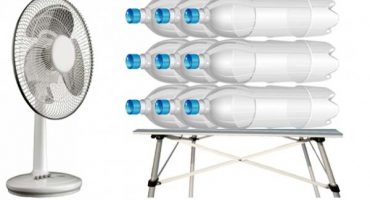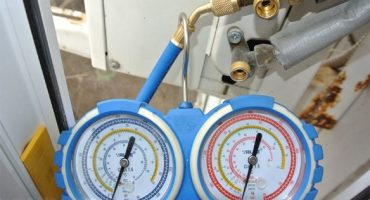Automotive industry is developing at a rapid pace - new enterprises are being created, companies will re-equip old factories, new concepts are emerging. There are several reasons for this “behavior” of the industry, but progress and technologies introduced in modern machines play a special role.
Further on the differences between climate control systems and air conditioning.
Fundamental concepts
To begin with, we’ll analyze the devices in a bit more detail in order to have an idea about the subjects being studied.
Air conditioning - a device that cools the air in the passenger compartment. Crankshaft belt drive is used as a power source. Hence the trivial conclusion - loss of engine power affects the performance of the system, the level of fuel consumption increases (in the future we will analyze why this happens).
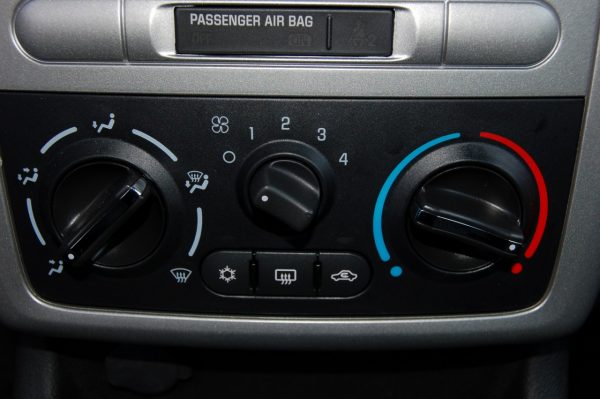
Air conditioning control panel
But the disadvantages are offset by an acceptable temperature balance.
Climate control - a closed system that combines heating components, air conditioning, measuring instruments, sensors and a separate computer (electronic control unit). Automatically (after pressing the “Auto” button) data is received from sensors located in the cabin and beyond, and the mini-computer processes incoming signals.
Further, complex calculations are carried out, the parameters set by the driver are compared with the available ones (their difference is determined), a further model of the behavior of the system, its individual nodes is built.
More advanced samples also analyze the degree of illumination of the interior and even humidity!

Control Panel
Chrysler Imperial was the first car to acquire air conditioning. An epoch-making event occurred in 1953.
The principle of operation of the air conditioner
Changing the temperature in the car is possible thanks to the refrigerant - freon. Over time, its number decreases, which forces the driver to contact the specialized service station.
Consider the operation of a closed system in a step-by-step form:
- Pressing the button activates (joins) the device with a pulley that moves with the help of a belt drive of the crankshaft.
- In the compressor, freon becomes gaseous, it is compressed, which increases the temperature of the “refrigerator”.
- The path lies through the radiator, where a separate fan (first gear is used) cools the warm gas-air mixture.
- The state of aggregation changes to liquid in the condenser, then the receiver-dryer filters the composition.
- Freon enters the evaporator, where it emits steam due to the difference in temperature, the built-in fan directs the air flow into the cabin.
- Refrigerant is used cyclically.
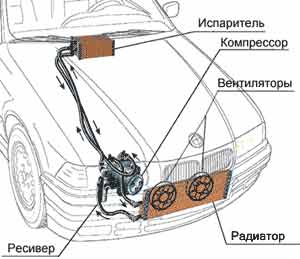
The scheme of the air conditioner
The effectiveness of the air conditioner directly depends on the movement of the car, in the traffic jam, the second gear automatically switches on the built-in fans. This contributes to greater consumption of gasoline or diesel.
The principle of operation of climate control
The electronic control unit works with a stove and air conditioning, regulates the fan speed, the direction of air flow.
The accuracy and versatility of the “box” is achieved due to the nth number of measuring instruments and sensors. They are located around the perimeter of the car, inside the cabin. Why such innovations?
The system analyzes the temperature inside and outside the machine.Electronic devices send information to the "command center", where the received data is processed.
Built-in algorithms compare the given parameters with the available ones, the ECU gives commands to different devices.

Duct arrangement
Climate control reduces fuel consumption, as the operation of components is optimized for the minimum permissible values.
Advantages and disadvantages of an air conditioner
For ease of perception, we divide the strengths and weaknesses of the component into several lists.
Drivers like:
- the ability to cool air at high temperature behind the windshield;
- increasing the level of attention and reaction due to comfortable conditions in the cabin;
- the struggle of the air conditioner with an unpleasant odor (tobacco, alcohol);
- drainage of air in adverse weather conditions (prevents fogging of windows).
Disadvantages:
- reduction in power of the moving unit;
- increased temperature under the hood (free space becomes less);
- frequent maintenance of the component parts of the device, their rapid wear;
- increased fuel consumption.
The disadvantages are offset by the obvious low cost of installing an analogue cooling system.
Advantages and disadvantages of climate control
Electronic equipment and technical innovations are not without strengths and weaknesses.
Motorists are pleased to:
- comfortable driving conditions of “iron horses”;
- accurate determination of the temperature outside;
- automatic operation of the system, which does not distract from the analysis of the roadway;
- inability to catch a cold due to incorrect temperature conditions.
Few prepared:
- to the high cost of components and the system as a whole;
- to expensive repairs, the failure of the system due to the failure of one device.
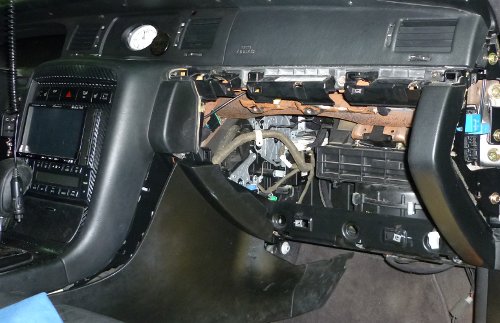
Initial phase of repair work
More advanced systems are available on the market that allow you to configure the microclimate for the driver-front passenger ligament (dual-zone) and rear seats (three- or four-zone).
Differences between climate control and air conditioning
Consider the main differences between the two systems:
- Control. An automated system is contrasted with manual adjustment of the operating mode. The driver is distracted from studying the road, which is fraught with the emergence of an emergency.
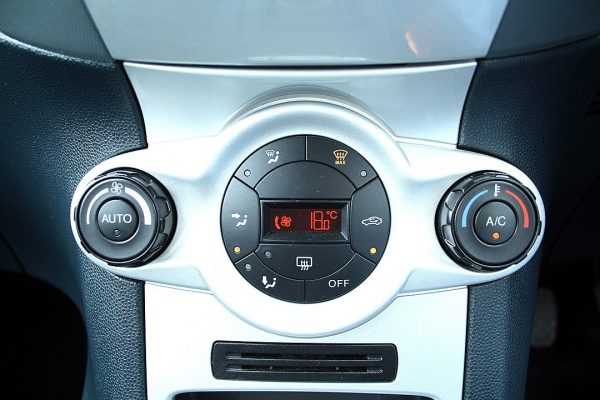
Climate Control Panel
- Comfort level. The task of the computer is to adjust the zoning of air cooling, taking into account the justification for using air ducts. In technical terms, the opponent is clearly losing.
- The complexity of the system. The multi-level system is devoid of the disadvantages inherent in individual components. Climate control combines components in a single organism, an increase in their number increases the quality of the ECU.
- Price policy. An automated system is not cheap, but a hundredfold pays off with the level of comfort, fuel economy. Drivers who make a choice based on price will prefer a cheaper component.
It’s better to buy a used car with air conditioning - there is obvious cost savings. In the case of a sale, the situation is the opposite.
Climate control is characterized by an increased level of comfort for the sake of cheapness and affordability. Air conditioning is more attractive to middle-income consumers.

